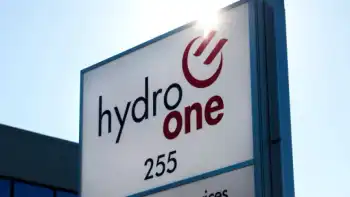Midwest gets set to go Green
By Bank Investment Consultant
Electrical Testing & Commissioning of Power Systems
Our customized live online or in‑person group training can be delivered to your staff at your location.

- Live Online
- 12 hours Instructor-led
- Group Training Available
States and municipalities that are beginning to use a number of public finance tools to attract new business could benefit further from recent legislation that significantly broadens the use of tax-exempt bonds for a variety of private projects, bond experts said.
One of the Midwest's chief advantages is the industrial distribution infrastructure - rail, roads, and bridges - that remains from its manufacturing days and can be reused for large-scale redevelopment projects and by renewable energy companies.
"It's impossible to expect Michigan or Ohio to ever enjoy the economic heyday they used to have, due to trends beyond any one state's control," said Christopher Chung, president and chief executive officer of the Missouri Partnership, a group that promotes public-private partnerships to attract business to Missouri. "A big focus for states in the Midwest will be renewable, alternative energy, and what that presents for economic development opportunities. States can take their overall infrastructure and use it to compete effectively for some energy technologies."
For example, as wind energy becomes the top renewable energy option across the country, the Midwest can attract companies that build the large-scale machinery used in wind farms, Chung said.
Many wind farms are being set up in the Midwest - voters approved a $120 million commercial wind farm in Elbridge Township, Mich., which would be the state's largest wind farm yet - and existing transportation infrastructure can make the area more attractive to manufacturers, according to Chung.
"Companies like Vestas have large, heavy pieces and need to ship them to wind farms and want to minimize the distance. That bodes well for the Midwest," he said.
While a number of states and cities are offering a wide range of tax breaks to companies interested in relocating and in boosting their workforce, other public finance tools are available to help boost redevelopment projects across the region.
The latest tax-exempt tool available to the region's states is a newly created category of private-activity bond called "Midwestern disaster area bonds" that became available under the Heartland Disaster Tax Relief Act of 2008, which was signed into law October 3, said Jim Snyder, a partner at Ice Miller LLP in Chicago.
Under the new law, private-activity bonds can be issued by nine states in the Midwest hit by floods last summer. Arkansas, Illinois, Indiana, Iowa, Kansas, Michigan, Minnesota, Missouri, and Wisconsin can each issue the bonds to finance relief projects in an amount up to $1,000 per person in a disaster area.
That means Indiana can issue up to $2 billion, or DuPage County, Ill., up to $950 million, Snyder noted. "This is almost a return to the old [industrial development bond] rules in the early 1980s," he said, referring to a time when tax-exempt bonds could be used to finance a wide variety of private projects.
The disaster bonds can be used to finance nearly any project affected by the floods, including shopping centers, hotels, and warehouses, Snyder said. "This is new for us, though it's the same concept used for Hurricane Katrina," he said.
Another legislative development is the ability of federal home-loan banks to offer letters of credit for a variety of tax-exempt projects, including economic development, housing, and manufacturing. The measure was part of the Housing Economic Recovery Act of 2008.
"We're going to see a lot more federal home-loan bank wraps," Snyder predicted.
And on the manufacturing side, Congress last year increased the capital expenditure cap for industrial revenue bonds issued for manufacturing projects. IRBs can now be issued for projects that cost $20 million - up from the $10 million cap in place since 1988 - a move that will mean many more middle-market deals can be financed through bonds, Snyder said.
But the use of tax-exempt bonds issued on behalf of renewable energy projects generally has little impact on the overall industry, participants said. For example, clean renewable energy bonds, sold as an incentive to invest in renewable energy generation, typically favor small projects and as a result have had little impact on the overall industry, said Peter Murphy, a public power analyst at Standard & Poor's.
"These definitely need to be expanded if the government is serious about expanding renewable energy," he said. "Congress has a chance to increase it, and they're being lobbied to do so."
On a larger scale, many Midwestern states are offering tax breaks to attract green jobs to struggling areas. Minnesota Gov. Tim Pawlenty announced a "mother lode" of tax incentives for companies that bring green jobs in the renewable energy sector to the state. The subsidy package includes breaks on corporate franchise taxes, capital gains taxes, sales taxes, and income taxes for investors.
Michigan Gov. Jennifer Granholm recently created an energy department and appointed an energy czar to pursue the creation of jobs in the renewable energy industry. She is also pushing for increased funding for research and development in alternative energies.
State lawmakers recently passed a Granholm-supported law mandating that utilities generate 10% of Michigan's energy from renewable sources - wind, solar, biofuels, and hydroelectric - by 2015. Most Midwestern states - and more than half the states across the country - have enacted similar mandates, though Nebraska, Kansas, and Indiana have not.
Meanwhile, the Midwest remains the center of U.S. production for ethanol. While the biofuel industry in many ways boosts local economies, the industry is running into some problems, participants said. The burst of ethanol plants over the last several years has increased capacity to the point where supply now outstrips demand.
"It's a possible benefit to local economies because of tax base and jobs and demand for the corn plants, but it can be risky if there's too much capacity and the price supports collapse," Standard & Poor's Murphy warned.
As a result of the increased production, the pace of financing and new construction for ethanol projects is likely to come to a halt over the next 12 to 18 months, panelists said.















